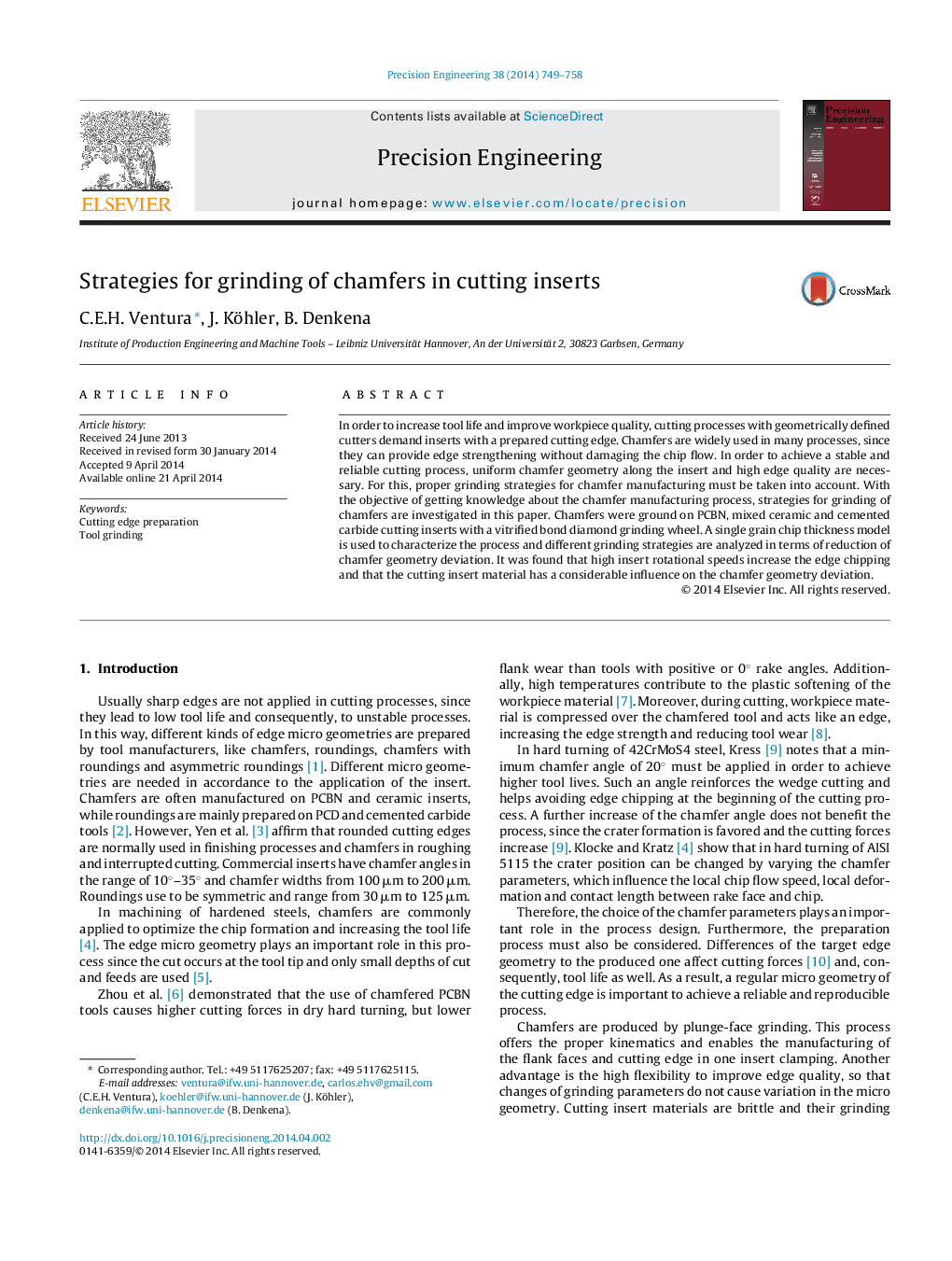| Article ID | Journal | Published Year | Pages | File Type |
|---|---|---|---|---|
| 803902 | Precision Engineering | 2014 | 10 Pages |
•A single grain chip thickness model is used to characterize the mechanical load during chamfer grinding in the insert corner.•An increase of the insert rotational speed increases the mechanical load at the insert corner and damages the edge.•Grinding strategies for reducing chamfer geometry deviations are analyzed.•Cutting insert material has a considerable influence on the chamfer geometry deviation.
In order to increase tool life and improve workpiece quality, cutting processes with geometrically defined cutters demand inserts with a prepared cutting edge. Chamfers are widely used in many processes, since they can provide edge strengthening without damaging the chip flow. In order to achieve a stable and reliable cutting process, uniform chamfer geometry along the insert and high edge quality are necessary. For this, proper grinding strategies for chamfer manufacturing must be taken into account. With the objective of getting knowledge about the chamfer manufacturing process, strategies for grinding of chamfers are investigated in this paper. Chamfers were ground on PCBN, mixed ceramic and cemented carbide cutting inserts with a vitrified bond diamond grinding wheel. A single grain chip thickness model is used to characterize the process and different grinding strategies are analyzed in terms of reduction of chamfer geometry deviation. It was found that high insert rotational speeds increase the edge chipping and that the cutting insert material has a considerable influence on the chamfer geometry deviation.
